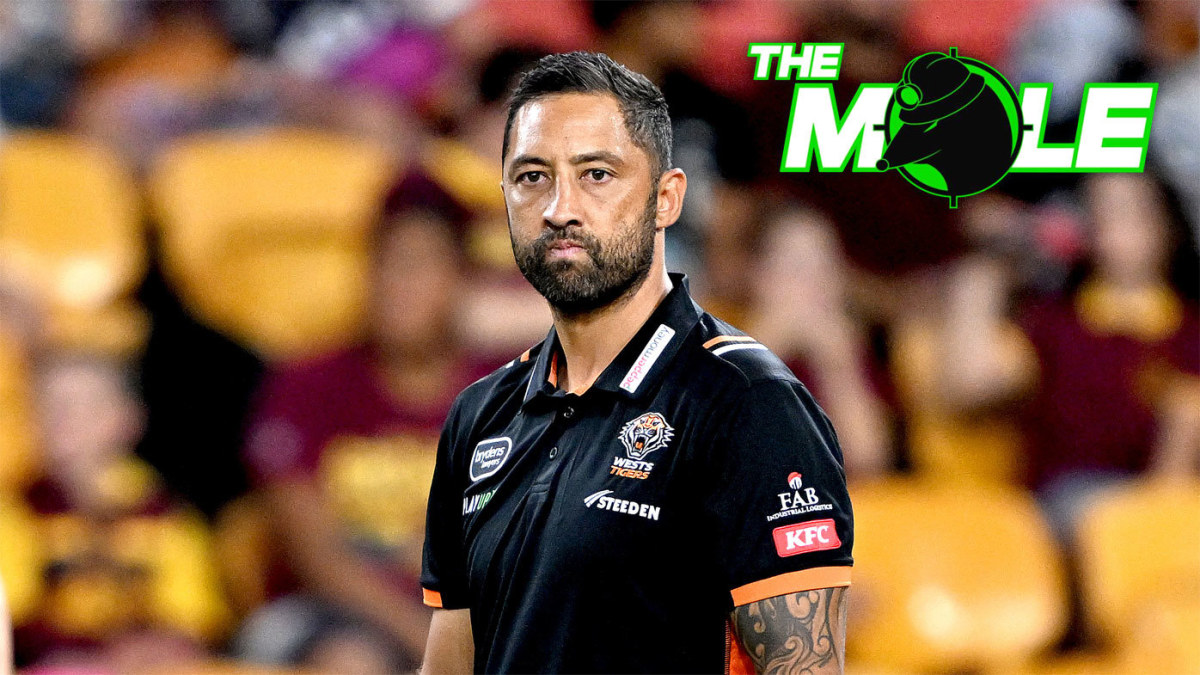I cannot open it (reached my quota of free articles), would someone else like to copy & paste?
The problem with Wests Tigers is too much of the Scarlett O’Hara “I’ll think about it tomorrow” philosophy.
Most people on the Wests side of the joint-venture NRL club admit their future is at Campbelltown but despite Balmain having only one director on the eight-person board, the decision to move westward is persistently delayed, just as Scarlett vacillated in Margaret Mitchell’s iconic book Gone With The Wind.
West Tigers’ spiritual past is Lidcombe and Leichhardt; the pragmatic present is a $40 million new training hub at Concord and a wealthy Leagues Club at Ashfield, together with some home games at Parramatta and Homebush.
But its future is an hour down the expressway to the rich vein of youthful playing talent at Campbelltown.
The most recent controversial decision – hiring Scott Fulton as chief recruiter – is an implied admission of the inevitable. Fulton, the son of Immortal Bob Fulton, has actively recruited players from Sydney’s outer west for the Sea Eagles, as have Canterbury. (In a 2021 under-17 representative match between Wests and Manly, six lads from each team gathered for a combined photo. All 12 were mates from Sydney’s south-west).
Fulton’s appointment is partly designed to identify western Sydney talent for West Tigers and stem its flow to inner-city clubs. Yet the manner in which his appointment was communicated to the Wests Tigers coaching staff further reflects Scarlett O’Hara thinking. The recommendation to appoint Fulton came from club management, headed by chief executive Justin Pascoe. The board, after some reservations, agreed on the Friday evening before a match against the Panthers in Bathurst, while insisting head coach Tim Sheens be told before the media learned of the decision.
Management opted to inform Sheens on the Monday and it leaked in the interim. When quizzed by some directors on the management delay, the response was, in effect, “We didn’t want to interfere with Tim’s preparation of the team.”
Sheens, a premiership winner at two clubs, is a professional. He would have blown up about not being consulted on the Fulton appointment but would never have let it impact on the team. He would have argued the club’s existing recruitment head, Warren McDonnell, had comprehensive knowledge of all the talent in the outer west.
It was McDonnell’s recruitment team which signed the three Campbelltown players – Luke Laulilii, Lachlan Galvin and Heath Mason – selected last weekend in the Australian Schoolboys team. McDonnell has since left the club, and it is not clear whether Wests Tigers will go through with the contractual offers he made to other talent in the south-west.
When the Wests Tigers board heard that Fulton may revoke the McDonnell offers, they instructed Pascoe to ensure this doesn’t happen. This is the same board whom former broadcaster Alan Jones recently called upon to resign, using the hackneyed cliche, “a fish rots from the head.” So, if the players identified by McDonnell and the very capable deputy Shannon Gallant are cut from Wests Tigers pathways and development program, is it the fault of the board, or another example of management delay?
There are remarkable similarities between the background and skills of the CEOs of the NRL’s two joint-venture clubs, with the Dragons also anchored to the bottom of the premiership ladder. Both Pascoe and St George Illawarra’s Ryan Webb were educated in Melbourne, were employed at the same AFL club, the Western Bulldogs, and worked together at Wests Tigers, where Webb was chief operating officer between 2015 and 2019. Their expertise is in marketing and finance, with Pascoe credited for securing a fixed price outcome for the Zurich Centre of Excellence.
The Concord headquarters, with its highly publicised barber’s shop, would suit the players, with few living at Campbelltown. Contrast that with the pre-club merger era when Tommy Raudonikis coached the Magpies and lived at Campbelltown.
Ahead of a home game, he stood on the back of a utility, loud hailer in hand, yelling in a throaty voice, “Come to the game”, as the vehicle rolled around Campbelltown on Saturday mornings. He once left his mobile phone on the cabin roof of the utility and it rolled off. Two youngsters found the phone and returned it to Tommy, yet the same community has the unkind reputation of removing hubcaps from cars driving too slowly past.
It’s not as if Wests Tigers are wedded to Concord. I visited, admittedly on a Monday, to do a podcast and it was almost empty, certainly not the buzz you see at the Storm’s Melbourne headquarters, even on a non-training day.
The Storm are 25 years old, almost the same as the Wests Tigers joint venture between the 1908 foundation clubs. Their separate histories are proudly and equally displayed at Concord but the black, white and gold colours of the joint venture dominate.
A new generation has grown up supporting Wests Tigers and, while the Magpies control the board, the ARLC would never allow the licence to be renamed Magpies. To blame Wests Tigers’ decade-long failure to play NRL finals on divided loyalties can only be valid if the players use this as an excuse. Players are notorious for finding external excuses for failure. (Witness the win which invariably follows the sacking of a besieged coach). Weak players always look elsewhere before examining the inadequacies inside their own uniform.
Former Wests Tigers coach Michael Maguire once phoned me, as a former Magpies coach, speculating he was considering resurrecting the Fibros versus Silvertails ethos.
This was a phrase I coined when in charge of the Magpies in the late 1970s to motivate the players from the western suburbs when we played the wealthier clubs, especially Manly.
I agreed the game’s elite still looked down upon Wests Tigers but all clubs now have the same salary cap. Rich clubs think the most important factor in winning is spirit. Poor clubs know it is money. Yet all clubs now receive the same NRL grant. Still, there would be a similarity in the family background of a Campbelltown-raised team and the original Fibros: they all came from the same money, which is to say, not much.
When Maguire’s team suffered a series of heavy defeats, I asked him how the Fibro push had gone. He revealed there was no buy-in from senior players.
Compare that with the comment from former Wests international Les Boyd when I was haranguing the Magpies about social injustice. Les, who never played on the right wing but has always positioned himself there politically, told me, “I know all that Fibro stuff you go on with is bullshit but I make myself believe it.” OK, perhaps the world has since moved on but it was a rare player in the late 1970s who didn’t put the club first.
Rugby league players have never enjoyed more power within a club than the present. Given the shallow pool of talent across the NRL, it’s a player market, where those at the poorly performing clubs can demand mid-season moves and seek extended time off. When Wests Tigers recently lost 74-0 to the Cowboys and club chair Lee Hagipantelis hinted he would look at potential replacements, there was push back from the football department about upsetting the sensitivities of players.
These were the same players who not only missed tackles but set themselves in position to avoid making them. Yet, when both Wests Tigers and the Titans made moves to reverse perennial failure, they moved against the football department, rather than the players. The Titans’ secret appointment of Des Hasler as coach was done without the knowledge of football manager Mal Meninga, while the Fulton choice blindsided Sheens and his planned successor, Benji Marshall.
Continues in Part 2 below:


